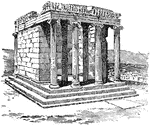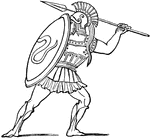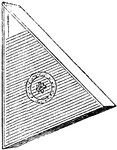
An Athenian Gravestone
"A relief on the tomb of a certain Hegeso. It represents a woman, seated, taking a jewel from a casket…
Combat Between Achilles and Hector
A depiction of the mythological combat between Achilles and Hector.
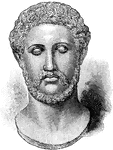
Alcibiades
A prominent Athenian statesman and member of the aristocratic family of the Alcmaeonidae.
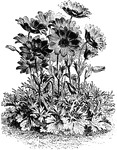
Anemone Fulgens Flower
The anemone fulgens flower is a dazzling scarlet color with a black central patch of stamens. This flower…

Cyclamen Persicum
Shown is a flower of perfect form and the crested variety of cyclamen persicum. The plant is native…

Ice Plant
The flowers of the ice plant are small, whitish or varying to light rose color. It is native to South…

The Acropolis
An image of the Acropolis, as it was, seated in Athens, Greece. The Acropolis is an ancient, famed citadel…

Gladiators
This illustration shows various types of gladiators, each type with with his specific weapons attributed…
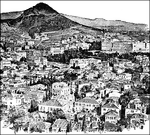
The City of Athens Circa 1912
The city of Athens, Greece as it looked circa 1912. The mountain in the background is Mount Lycabettus.…

The Victors of Salamis by Fernand Cormon
Illustration of a painting of the ancient Greeks returning victorious from the Battle of Salamis against…

The Acropolis of Athens - Restoration of the Propylaea
Illustration of the Acropolis restored to what it may have looked like when originally completed. The…
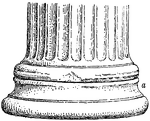
The Base of an Ionic Column at the Erechtheum
The base of the column, torus, displays a concave molding called a scotia. This type of base was not…

